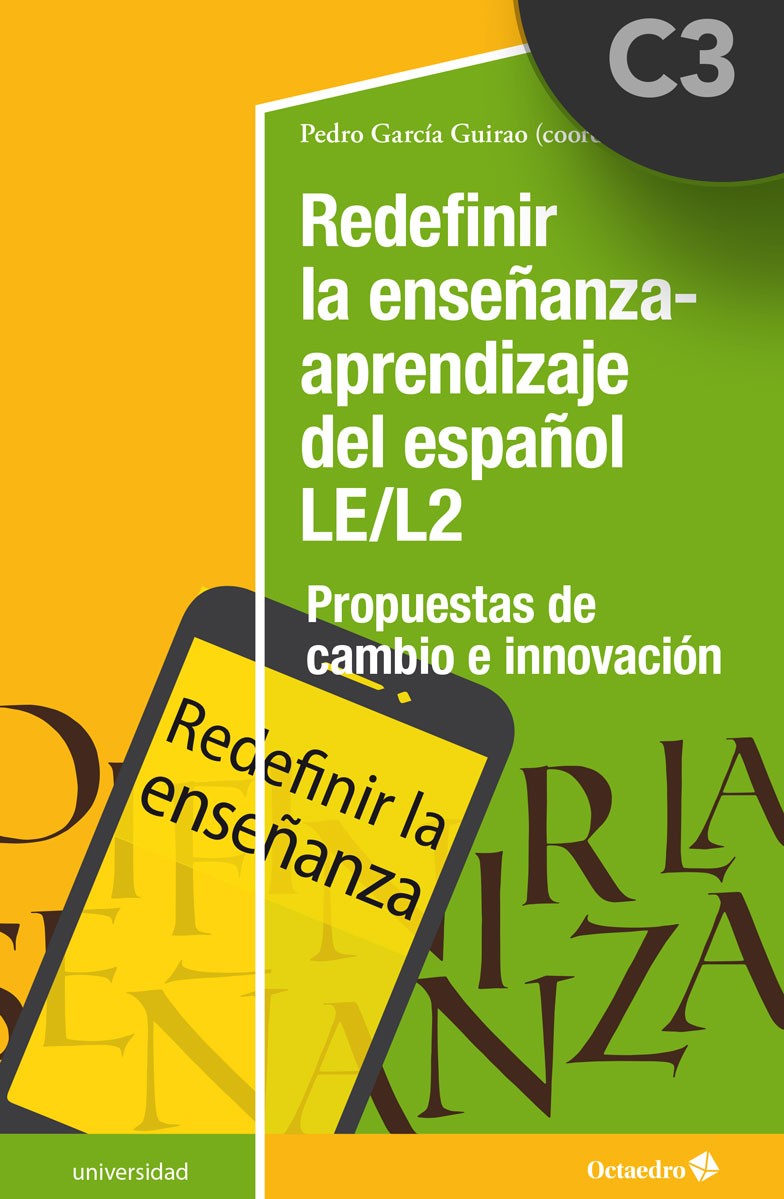FICHA TÉCNICA
Fecha de publicación:
22/03/2024
Doi del capítulo:
Título del libro: Redefinir la enseñanza-aprendizaje del español LE/L2
URL del libro:
ISBN del libro: 9788418819810
DOI del libro:
Abstract
La videocaptura permite a la docente mostrar en la pantalla todo tipo de tareas y grabar su interacción verbal y visual con el trabajo del estudiante. La simplicidad tecnológica del software convierte el feedback audiovisual de videocaptura de pantalla (FAV) en un lienzo en blanco que puede albergar combinaciones muy variadas de técnicas pedagógicas. Esto ofrece muchas posibilidades para mejorar la efectividad del feedback, su estatus en la relación educativa y la satisfacción profesional de las docentes.
En este capítulo se desgranan los diferentes modos de FAV. Además, se defiende que el uso creativo de esta tecnología contribuye a una redefinición de las prácticas educativas en el área de feedback y evaluación. La docente, al reivindicar su papel de diseñadora, puede afirmar su agencia crítica frente al neoliberalismo educativo y la expansión corporativa digital.
Palabras clave
Autores
Cómo citar
Martínez-Arboleda, A. (2021). Tecnología, pedagogía y liberación en la enseñanza de lenguas: el feedback audiovisual de videocaptura de pantalla (FAV). En García Guirao, P. (coord.). Redefinir la enseñanza-aprendizaje del español LE/L2 (pp. 49-64). Octaedro. https://doi.org/10.36006/16332-03
Referencias bibliográficas
- Edwards, K., Dujardin F. y Williams N. (2012). Screencast Feedback for Essays on a Distance Learning MA in Professional Communication. Journal of Academic Writing, 2 (1, otoño), 95-126.
- Harper, F., Green, H. y Fernández-Toro, M. (2012). Evaluating the integration of Jing screencasts in feedback on written assignments. 15th International Conference on Interactive Collaborative Learning.
- Martínez-Arboleda, A. (2013). Liberation in OpenLIVES Critical Pedagogy: Empowerability and Critical Action. Caracteres. Estudios culturales y críticos de la esfera digital, vol. 2 (1), 112-127.
- Martínez-Arboleda, A. (2016). Historia oral digital: reprogramación y empoderamiento educativo y social. En: Bresciano, J. y Sossai, F. (coord.). El conocimiento histórico en el cíberespacio: prácticas académicas y proyección social. Montevideo: Cruz del Sur.
- Martínez-Arboleda, A. (2018a). Student Feedback through Desktop Capture Feedback: creative Screen-casting. Proceedings of the Seventh International Conference on E-Learning and E-Technologies in Education (ICEEE2018) (pp. 32-43). Lodz, Polonia.
- Martínez-Arboleda, A. (2018b). Audiovisual Student Feedback (ASF) in Higher Education: Teaching and Power. The International Journal of E-Learning and Educational Technologies in the Digital Media (IJEETDM), 4 (4), 98-113.
- Martínez-Arboleda, A. (2021). Ipsative assessment: measuring personal improvement. En: Beaven, T. y Rosell-Aguilar, F. (coord.). Innovative language pedagogy report (pp. 77-82). Research-publishing.net.
- Mathieson, K. (2012). Exploring Student Perceptions of Audiovisual Feedback via Screencasting in Online Courses. American Journal of Distance Education, 26 (3), 143-156.
- Mehl, M. y Fose, L. (2017). Digital Academic Revolution: Mentorship Competence. #5 The Analysis. Learning from our metadata. OLC Research Centre for Digital Learning & Leadership. Online Learning Consortium.
- Soden, B. (2016). Combining screencast and written feedback to improve the assignment writing of TESOL taught master’s students. The European Journal of applied Linguistics and TEFL, 1, 213-236.
- Tyrer, C. (2021). The voice, text, and the visual as semiotic companions: an analysis of the materiality and meaning potential of multimodal screen feedback. Education and Information Technologies, 26, 4241-4260.
